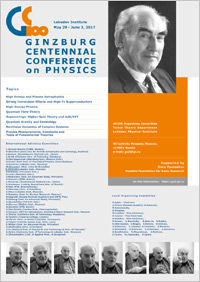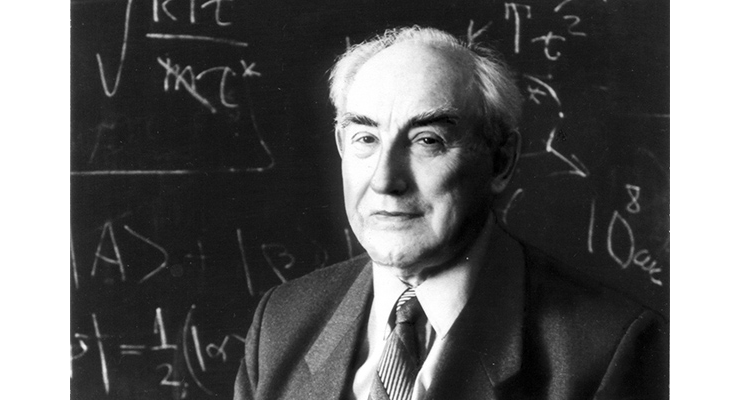Ginzburg Centennial Conference on Physics
Conferences, 26 May 2017

The Ginzburg Centennial Conference on Physics dedicated to the 100 anniversary of the outstanding Soviet and Russian theoretical physicist, Laureate of the Nobel Prize in Physics Vitaly Lazarevich Ginzburg will be held 29 May – 3 June 2017 in the Lebedev Physical Institute of the Russian Academy of Sciences (LPI RAS).
The Conference will cover a variety of subjects: Relativistic and Plasma Astrophysics, Strong Correlation Effects and High-Tc Superconductors, Condense Matter Physics, High-Energy Physics, Quantum Field Theory, Superstrings, Higher-Spin Theory, and AdS/CFT, Quantum Gravity and Cosmology, Nonlinear Dynamics of Complex Systems, Precision Measurements, Constants, and Tests of Fundamental Theories.
Venue: LPI RAS, 53 Leninsky Prospect, Moscow, 119991 Russia

His primary works have been on the theory of wave propagation in the ionosphere, radio astronomy, problems in the origin of cosmic rays, the thermodynamic theory of ferroelectric phenomena, the theory of superconductivity, optics, the theory of radiation, and astrophysics. In 1940 Ginzburg worked out the quantum theory of the Cherenkov-Vavilov effect and the theory of Cherenkov radiation in crystals. With L. D. Landau, he formulated a phenomenological theory of superconductivity. In 1950 and 1951 he worked on problems in thermonuclear reactions. Since 1958 he has been researching problems in the theory of excitons and in crystallooptics. He worked out the theory of magnetic-braking cosmic radio-frequency radiation and a radio astronomy theory on the origin of cosmic rays.
In 1940 after the Cherenkov-Vavilov effect was discovered and explained, Ginzburg developed quantum theory based on this effect and the theory of superlight radiation in crystals. Six years later together with Il’ja Frank he developed the theory of transient radiation, emerging when a particle crosses the boundaries of two media. In 1942 he started working at the Theoretical Department at the Institute of Physics of the USSR Academy of Sciences. Since 1940s Ginzburg worked on the theory of superconductivity and the theory of superfluidity. In 1950 together with Lev Landau he developed the semiphenomenological theory of superconductivity (also known as the Ginzburg-Landau theory). He also developed the theory of cosmic radio-frequency radiation and radioastronomical theory of the origin of cosmic radiation.